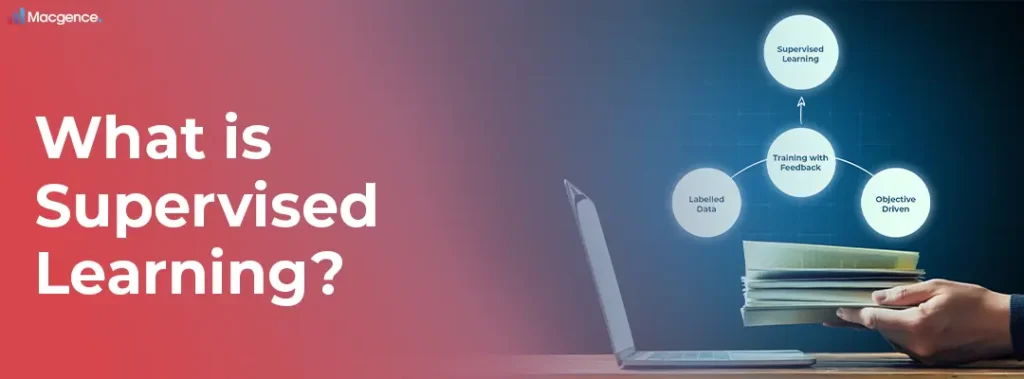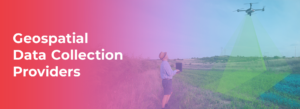Balancing Act: Deconstructing Supervised and Unsupervised Learning
In the current world of advancement in machine learning, there are mainly 2 primary models found: supervised and unsupervised learning models. These two models serve as the bedrock upon which endless models, algorithms & applications are being built every single day.
In this blog, let’s learn more about the key differences between them as it’s essential for anyone learning about the world of AI & data science.
What is Supervised learning?

In supervised learning, algorithms learn from a dataset consisting of input & output pairs, where each input is associated with an interrelated output label. This labeled dataset serves as a training set, providing the algorithm with examples of correct responses.
The goal is for the algorithm to learn a mapping or relationship between the inputs and outputs. This enables it to precisely predict or classify new, unseen data instances. The guidance provided by the labeled data guides the learning process, allowing the algorithm to generalize patterns and make informed decisions when presented with new data.
Key Features of Supervised Learning:
- Labeled Data: Each example in the dataset comes with a label or the correct answer. It’s like having a tag on each example saying what it is.
- Training with Feedback: The algorithm learns by comparing its predictions with the correct answers. It’s like a student getting feedback on their homework.
- Objective-driven: Supervised learning has clear goals. Whether it’s sorting emails or diagnosing diseases, the algorithm knows what it’s aiming for.
Advantages of Supervised Learning:
- High Accuracy: With labeled data & clear objectives, supervised learning models can make accurate predictions.
- Interpretability: The model makes certain predictions & interprets since it learns from labeled examples.
- Direct Feedback: The algorithm gets feedback on its predictions, helping it improve over time.
What is Unsupervised learning?

Unsupervised learning is a machine learning model where algorithms learn from unlabeled data without clear-cut guidance. Unlike supervised learning, there are no previously defined output labels provided in the training data. Instead, the algorithm seeks to identify inherent patterns, structures, or relationships within the data on its own.
Key Features of Unsupervised Learning:
- Unlabeled Data: The dataset used for training contains input data without corresponding output labels.
- Exploratory Nature: Unsupervised learning algorithms explore the data to uncover hidden structures or patterns.
- No Feedback Loop: Since there are no ground truth labels, the algorithm doesn’t receive explicit feedback during training.
Advantages of Unsupervised Learning:
- Fundamental Analysis: Unsupervised learning enables the discovery & exploration of hidden patterns or structures within data, providing valuable insights.
- Scalability and Flexibility: Unsupervised learning techniques can certainly handle large, complex datasets and additionally adapt to different data distributions without needing labeled data.
- Anomaly Detection: Unsupervised learning algorithms undoubtedly come through at identifying unusual patterns or exceptions within data, particularly in inconsistent detection tasks.
What is the difference between supervised & unsupervised learning
Let’s look at a brief breakdown of the key differences between supervised and unsupervised learning:
- Data Type:
- Supervised Learning: Relies on labeled data where each example is paired with a corresponding output label.
- Unsupervised Learning: Operates on unlabeled data without explicit output labels provided during training.
- Goal Orientation:
- Supervised Learning: Here it learns to predict or analyze new data based on labeled examples with predefined goals.
- Unsupervised Learning: Explores data to expose hidden structures or patterns without predefined objectives.
- Feedback Mechanism:
- Supervised Learning: Receives explicit feedback on predictions based on ground truth labels during training.
- Unsupervised Learning: Does not have access to feedback since there are no ground truth labels provided.
- Tasks:
- Supervised Learning: Used for prediction & classification tasks, here the algorithm learns to assist input features with output labels.
- Unsupervised Learning: Used for exploratory analysis & pattern discovery in data without clear-cut labels, such as assembly or bulk reduction.
To summarize, the key difference between the both is that supervised learning operates with labeled data and clear objectives, on the other hand, unsupervised learning explores unlabeled data without predefined goals, leading to distinct approaches and applications in ML, machine learning.
Why choose Macgence?
Get started with Macgence to learn the power of supervised as well as unsupervised learning. Macgence provides a seamless experience for beginners and experts alike. Whether you’re interested in predictive modeling with supervised learning or uncovering hidden patterns with unsupervised learning, Macgence has you covered.
Join us today and upgrade the way you approach AI and data science.
FAQs
Ans: – Understanding these two primary models in machine learning is important for anyone who is into AI and data science. Supervised learning relies on labeled data with predefined objectives, while unsupervised learning explores unlabeled data to uncover hidden patterns. This knowledge guides the choice of algorithms and methodologies for various applications, ultimately impacting the success of AI projects.
Ans: – Supervised learning operates on labeled datasets, here each example is paired with a corresponding output label. Additionally, supervised learning is objective-driven, with clear goals guiding the algorithm’s learning process.
Ans: – Macgence offers an extensive platform for AI and data science enthusiasts and provides intuitive tutorials & expert support to operate the complexities of machine learning. Whether you’re interested in predictive modeling with supervised learning or exploring hidden patterns with unsupervised learning, Macgence equips you with the tools and resources needed to revolutionize your approach to AI and data science.
You Might Like
February 28, 2025
Project EKA – Driving the Future of AI in India
Artificial Intelligence (AI) has long been heralded as the driving force behind global technological revolutions. But what happens when AI isn’t tailored to the needs of its diverse users? Project EKA is answering that question in India. This groundbreaking initiative aims to redefine the AI landscape, bridging the gap between India’s cultural, linguistic, and socio-economic […]
April 5, 2025
The Ultimate Guide to Geospatial Data Collection Providers
Geospatial data collection has become an essential part of modern industries, playing a vital role in urban planning, environmental monitoring, transportation, agriculture, and defense. With the advent of advanced technologies such as artificial intelligence (AI), satellite imaging, drones, and LiDAR, the geospatial industry is witnessing a rapid transformation. In this blog, we will explore some […]
April 1, 2025
The Strategic Benefits of Partnering with Macgence for Model Evaluation and Validation
In the rapidly evolving AI landscape, ensuring robust model performance is not just an advantage—it’s a necessity. For businesses leveraging AI/ML technologies, partnering with a specialized validation partner like Macgence can mean the difference between unreliable prototypes and enterprise-grade AI solutions. At Macgence, we bring unmatched expertise in AI model evaluation and validation to help […]
March 24, 2025
Natural Language Generation (NLG): The Future of AI-Powered Text
The ability to generate human-like text from data is not just a sci-fi dream—it’s the backbone of many tools we use today, from chatbots to automated reporting systems. This revolution in artificial intelligence has a name: Natural Language Generation (NLG). If you’re an AI enthusiast or a tech professional, understanding NLG is essential for keeping […]


 Previous Blog
Previous Blog







